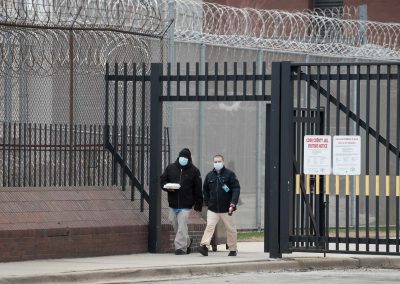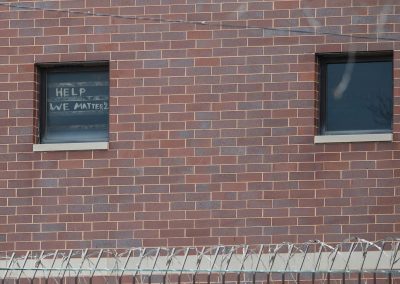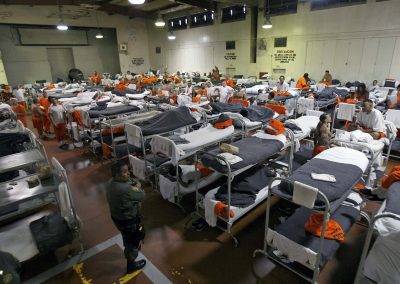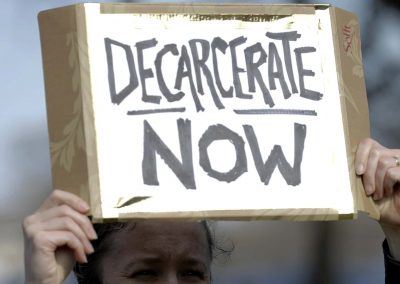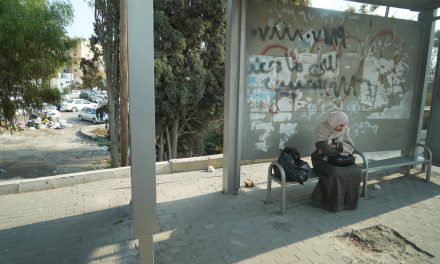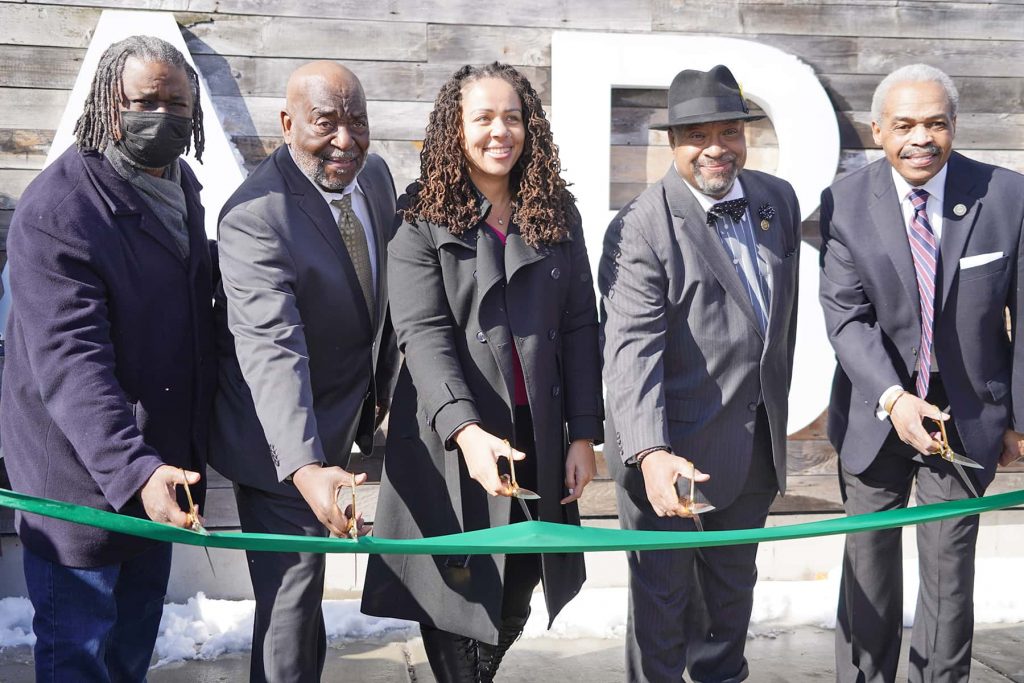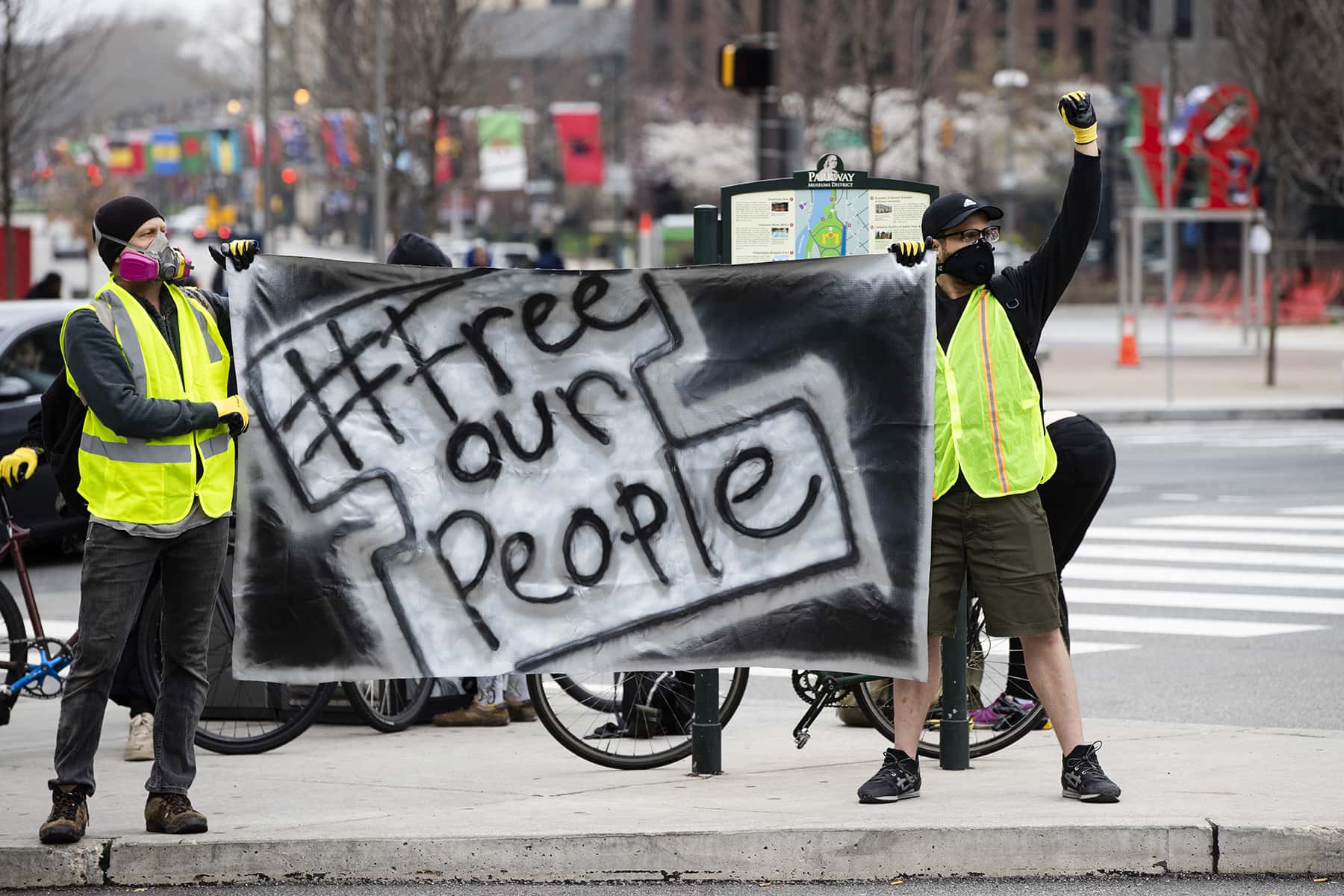
“27 inmates at House of Correction have tested positive for coronavirus”
– Milwaukee Journal Sentinel, April 17, 2020
“38 percent of Arkansas COVID-19 cases concentrated in state prison”
– The Hill, April 21, 2020
“63 House of Correction inmates tested positive for COVID-19, along with 3 employees”
– Fox6News, April 20, 2020
“73% Of Inmates At An Ohio Prison Test Positive For Coronavirus”
– NPR, April 20, 2020
These disturbing headlines keep coming. As the coronavirus continues to kill tens of thousands of Americans, we get daily updates from city, county, state and federal leaders about the outbreak. One thing we do not hear enough about is how our prisons and jails, housing 2.2 million people on any given day, have become coronavirus petri dishes.
These men, women and children are the people our society has discarded. We see them as deserving of whatever they get. As a society we have little to no sympathy for their condition. I have friends and relatives incarcerated in state and local prisons. I have been fortunate enough over the past five years to meet and become friends with many that have served time in jails and prisons in Wisconsin. I visited a state prison in Minnesota two years ago and Columbia Correctional Institute in Portage, Wisconsin last year. Both trips were eye opening for different reasons.
My first time inside of a prison was as a visitor from the 148th annual American Corrections Association (ACA) conference. The ACA is a century and a half old organization with over 5,000 members. The annual conference I attended was in Minneapolis, Minnesota in 2018. The ACA “has championed the cause of corrections and correctional effectiveness. Founded in 1870 as the National Prison Association, ACA is the oldest association developed specifically for practitioners in the correctional profession” according to their website. I was one of thousands of attendees from around the country. I was on a mission to study the corrections system to gain a better understanding of how it fits into the prison industrial complex.
There were excursions offered for attendees to a women’s prison and a men’s prison. I went to the men’s prison. We were treated like VIP’s, not a threat to the institution. The tour included seeing everything including walking into cellblocks and inside cells. WE saw the operations center of the prison, and walked freely among the inmates on the athletic field and basketball court. We had a session with inmates who train support dogs. It was truly surreal for me, knowing that I have friends and relatives in prisons like this around the country.
My second visit to a prison was more recent. I visited and spent about four hours with a man that has become a friend, Derek Williams. I had met his wife at a talk I gave last year. She came up to me to talk after I finished because I mentioned that I was doing work on presentations about mass incarceration. She told me Derek’s story. He was accused of being a part of a group that robbed a grocery story. Three men entered the store with a gun wearing disguises demanding that the staff open the safe. No one was harmed during the robbery and a small amount of cash was taken from the safe. The six workers at the store described the robbers as three “dark skinned” black males.
Derek has very light skin. None of the witnesses was able to identify him as one of the robbers. He had alibi witnesses to corroborate he was not their. His court appointed attorney never called any of these alibi witnesses to the stand. The attorney never pointed out that he did not fit the description given by the store employees. Derek was forced by the court system to have a concurrent trial with one of the other men accused. A third man arrested by police turned state’s evidence and said Derek was there during the trial. He wrote Derek a letter saying he was sorry for lying about him being there when he knew Derek was not.
The jury convicted Derek and his co-defendant. The man who pointed the finger of blame was found with money from the robbery as well as the gun. He was given a deal by prosecutors for his testimony and given a ten-year sentence. Derek fell victim to a tactic used by prosecutors called stacking charges. He was charged with two-counts of armed robbery for each of the six workers in the store. Each charge carried a penalty of fifteen years. Derek was effectively charged as if he committed six different robberies with two charges for each. He was sentenced to one hundred eighty years in prison.
He has been fighting to prove his innocence since the 1990s. The Innocence Project which has worked to help hundreds of falsely incarcerated men and women gain their freedom tried to get the man who pointed the finger at Derek to testify that he lied. He refused to do so, fearing his deal with the prosecutors would be reneged on. Him simply writing a letter is not enough to get Derek out. He needs to testify in open court but has refused to do so.
Derek and I have become friends as I have worked with him and his wife to get help gaining his release. Most are shocked when the story of a robbery where no one was harmed, and the fact that he had multiple alibi witnesses proving he was not there. For anyone to receive a life sentence literally for this is an example of how this system is broken. They could not under the law give him a life sentence but gave him the equivalent for a crime that should have received a sentence of just fifteen years.
I have been fortunate to meet and get to know many other men and women who have spent time behind bars, some professing their innocence, others willingly admitting that they were guilty as charged. For most Americans it does not matter either way. The common refrain of “do the crime, do the time” is one that I have heard constantly.
The Innocence Project is one of many groups that have worked to free innocent people. The National Registry of Exonerations reports that 2,604 men and women have gained their freedom after being falsely accused, charged, and convicted in our courts. The organization was co-founded in 2012 along with the Center on Wrongful Convictions at the law school at Northwestern University. They have tracked exonerations occurring since 1989. The individuals who were fortunate enough to be freed have lost over 23,000 years of freedom.
Despite what most believe, only about one fifth of exonerations are the result of DNA testing. Most of those falsely imprisoned had multiple causes leading to their wrongful convictions. One hundred forty-three people were exonerated last year. The contributing factors leading to these men and women being wrongly sent to prison range from 59% of them being the victim of perjury or other false testimony, 54% as the result of official misconduct by police or prosecutors, 29% were due to mistaken witness ID, 24% had false or misleading forensic evidence leading to their convictions and 12% were the result of false confessions. Most cases had multiple contributing factors, which accounts for the totals above not adding up to 100%.
As a nation we are just 4.4% of all people on the planet but one in five people incarcerated on any given day are in prisons and jails in the United States and its possessions. The criminal justice system employees at least 2.2 million people. It is one of the largest employers in the country. By comparison the four branches of the military combined have just 1.3 million active duty members.
Black people are just over twelve percent of America’s population but one third of prisoners in the country are black. According to the Bureau of Justice Statistics 10.7 million people were admitted to the nations jails in 2018. The total average daily population of our 3,163 jails was 737,900. Of the 738,400 jail inmates at year-end 2018, 490,000 were people who had not been convicted and were waiting on charges or trials. Many were too poor to afford the cash bail that would allow them to go home.
In December 2017, 1,489,363 people were housed in over 1,700 state prisons and 102 federal prisons. Over 40,000 of those in our prisons were age sixty-five or older. They fall squarely in the group most susceptible to the coronavirus according to outlines from the Centers For Disease Control and Prevention (CDC). Activist here in Wisconsin sent out a call over a month ago asking leaders to protect those in our jails and prisons, especially those older ones with pre-existing diseases like diabetes and high blood pressure making them more likely to die if they contract the virus. For the most part those requests fell on deaf ears.
As we see the number of cases in jails and prisons increase, something must be done to protect this vulnerable group of women, men and children. A single prison in Arkansas, Cummins Prison, has 850 inmates that have tested positive so far. That is 38 percent of the cases in the entire state in one place. 206 of the 304 new cases between April 21st and 22nd were in Cummins. The prison only houses 1,200 so that means 71 percent of those in the prison are infected along with at least 10 guards.
271 people have tested positive in the Cook County Jail in Chicago, the nation’s second largest jail. 53 year-old Michael Tyson became the first inmate in Rikers Island jail in New York to die of COVID-19 last week. He was being held on a technical violation of his parole. His name was on a list over 100 that activists had given to authorities, saying they were not a threat to the public and should be released due to pre-existing diseases. He was one of at least 273 inmates that tested positive in the second largest jail in the country. Six inmates have died in New York state prisons since the outbreak began. Over 239 prisoners have tested positive in the 52 prisons in the state but testing has been sporadic so far.
Franklin’s House of Corrections (HOC) confirmed on April 22, 2020 that 103 inmates tested positive for COVID-19, while 22 tested negative, and 10 had recovered. Several staff members have also tested positive there so far. HOC Superintendent Michael Hafemann stated, “We do anticipate we are going to have a lot more inmates who test positive.” Only three weeks ago there were zero cases in the HOC. There have been efforts by county officials to deal with the COVID-19 outbreak including releasing people from local jails and limiting the numbers of people admitted to jails. The county jail population has been reduced from over 1,800 in December to just 1,373 now.
The largest single cluster of COVID-19 in the entire country is at the Marion Correctional Institution in Ohio. As of April 20, a total of 1,828 inmates had tested positive. 109 staff members have also tested positive. Unlike most prisons and jails in the country Marion tested everyone. “Because we are testing everyone — including those who are not showing symptoms — we are getting positive test results on individuals who otherwise would have never been tested because they were asymptomatic,” the Ohio Department of Rehabilitation and Correction says.
In the state’s prison system, about 2,400 inmates and 244 staff members have tested positive. They account for 20 percent of all cases in the state and a prison in Pickaway County will begin testing everyone soon, which will likely increase the total numbers in the state. Ohio has tested more prisoners than any other state. They continue to aggressively test inmates and staff, a lesson that Wisconsin could learn from.
So far the Wisconsin Department of Corrections has only tested 117 inmates with 13 positive tests and six pending results as of April 22nd. Statewide 16 DOC staff have tested positive. With over 23,000 inmates the numbers of positive cases could be significant and we will only know if we take the approach Ohio employed.
Around the country prisoners-rights advocates, have advised that the prison population includes people who are older with many having underlying health conditions. I agree with their requests to release some of these people before they become severely ill and die unnecessarily from this pandemic.
William Garrison had served 44 years for a murder conviction when he was 16 in Detroit, Michigan. A parole agent visited his sister’s home where he planned to live when released. The next day Garrison died of COVID-19 at the Macomb Correctional Facility in Lenox Township, Michigan. His death came just 24 days before he was due to be released. His sister Yolanda Patterson said “He wanted to work as an advocate for people in jail. He was a very knowledgeable person. He had a lot going on. He helped a lot of prisoners, reviewing their cases. He got people out of jail. “I’m the only person who closely stood with my brother for 44 years and walked this road with him. We’re heartbroken because he was coming home. Justice should be served because my brother shouldn’t have died.”
While many Americans who make claims like “All Lives Matter” stand by and watch, hundreds are getting ill and many will die in our prisons and jails unjustly. We can and should do more to help them. I hope that my friend Derek and my cousin, who is serving time in a federal prison in Florida, survive this pandemic.
“No one truly knows a nation until one has been inside its jails. A nation should not be judged by how it treats its highest citizens but its lowest ones.” – Nelson Mandela
© Photo
Lee Matz

